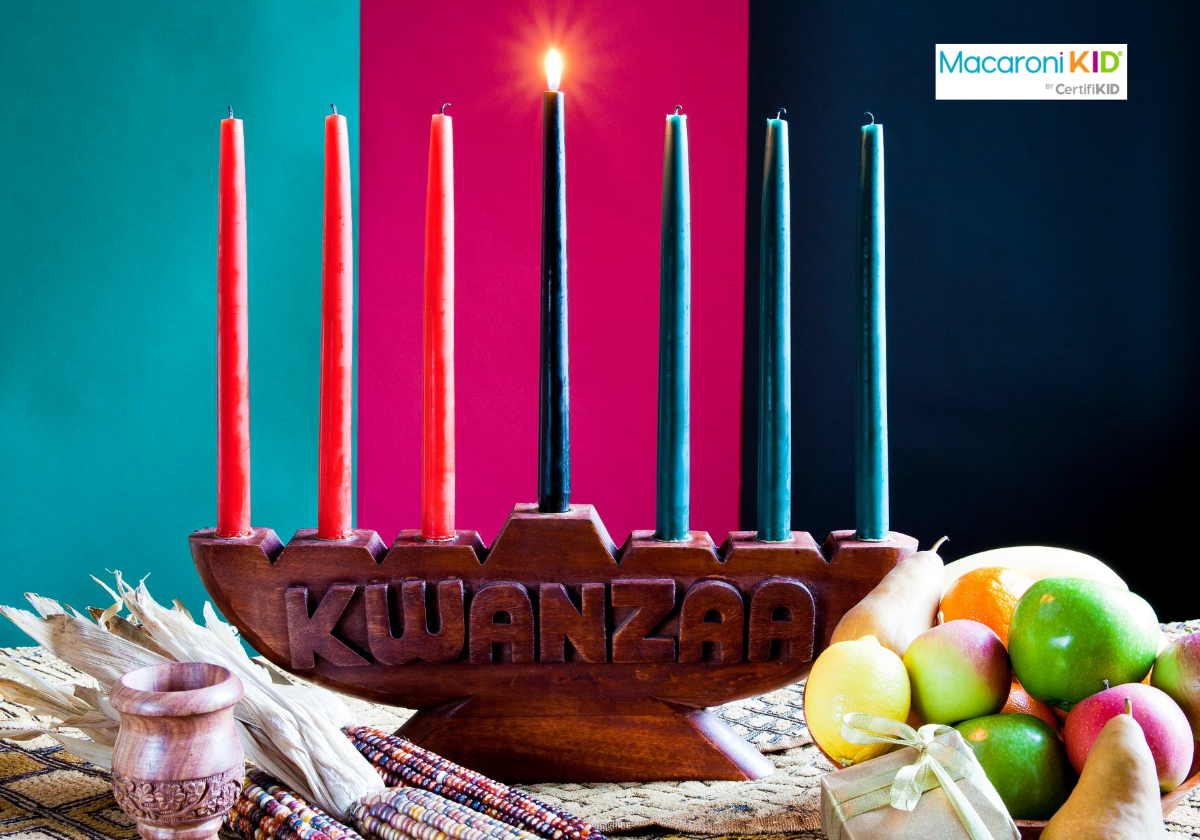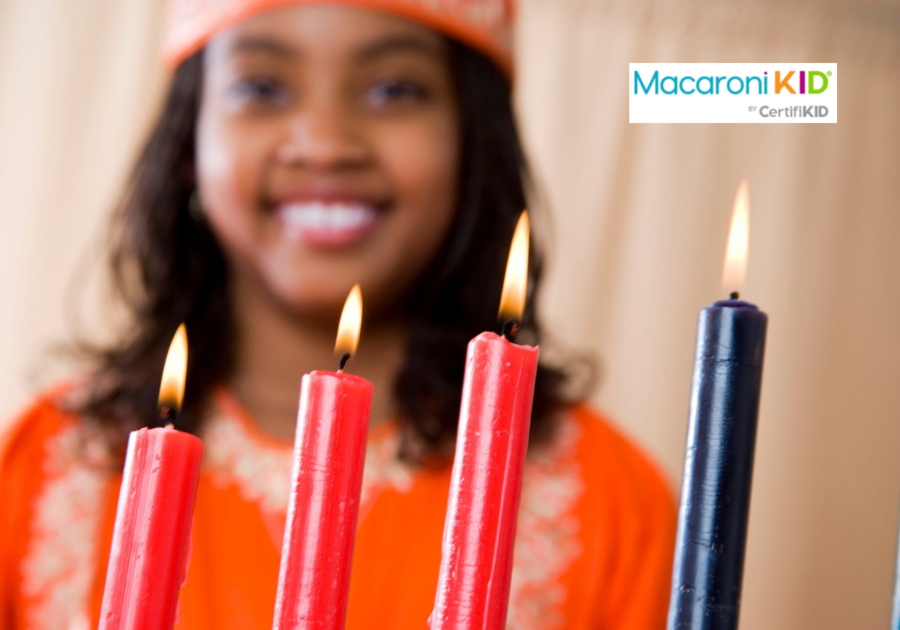Kwanzaa is family-oriented so it's easy to get children involved. Many of the activities surrounding the annual event are geared toward children of all ages and most certainly adaptable for little ones.
The main colors of Kwanzaa are green, black, and red. You should incorporate these hues into your decorating and crafts, from placemats to collages, and other decor items. Since Kwanzaa has a big focus on creativity, you can encourage your kids to make handmade cards and signs to give to relatives and friends. They will enjoy learning and diving into all of the activities that will provide a rich history to carry on for many years to come.
About Kwanzaa
Kwanzaa was founded by Maulana Karenga, a black nationalist who later became a college professor. Karenga created Kwanzaa as a way of uniting and empowering the African-American community in the aftermath of the deadly Watts riots. Having modeled his holiday on traditional African harvest festivals, he took the name “Kwanzaa” from the Swahili phrase, “matunda ya kwanza,” which means “first fruits.” The extra “a” was added simply to accommodate seven children at the first-ever Kwanzaa celebration in 1966, each of whom wanted to represent a letter, according to Karenga.
Kwanzaa is centered around seven principles and each day of the seven days is dedicated to one of “The Seven Principles of Kwanzaa.” The seven principles are:
- umoja: to maintain unity in the family and community
- kujichagulia: self-determination, to be responsible and speak for oneself
- ujima: collective work and responsibility, to build and maintain a community
- ujamaa: economic co-operation, to help and profit one another
- nia: purpose, to build and develop the community for the benefit of the people
- kuumba: creativity, to do everything possible to leave the community more beautiful and beneficial for future generations
- imani: faith, to believe in parents, teachers, and leaders.
Kwanzaa also has seven symbols – mazao (crops), mkeka (mat), kinara (candleholder), muhindi (corn), kikombe cha umoja (unity cup), zawadi (gifts) and mishumaa saba (seven candles) – that are traditionally arranged on a table. Three of the seven candles are red, representing the struggle; three of the candles are green, representing the land and hope for the future; and one of the candles is black, representing people of African descent. Some families who celebrate Kwanzaa dress up or decorate their homes in those colors.
 Getty Images Pro via Canva Getty Images Pro via Canva |
"Kwanzaa is not a religious holiday. It is a cultural one with inherent spiritual quality,” Karenga writes. “Thus, Africans of all faiths can and do celebrate Kwanzaa, i.e. Muslims, Christians, Black Hebrews, Jews, Buddhists, Baha’i, and Hindus, as well as those who follow the ancient traditions of Maat, Yoruba, Ashanti, Dogon, etc.” According to Karenga, non-blacks can also enjoy Kwanzaa, just as non-Mexicans commemorate Cinco de Mayo and non-Native Americans participate in powwows. Thus, Kwanzaa does not replace Christmas, as many people celebrate both.
In order to avoid over-commercialization, homemade and educational gifts are encouraged on Kwanzaa. Common gifts are books, music, art accessories, or other culturally-themed products, preferably from a Black-owned business.
More information can be found by visiting the official Kwanzaa website.
 Photo Images via Canva Photo Images via Canva |
Teaching Kids About Kwanzaa
Craft Ideas:
Recipes:
- Better Homes & Gardens 21 Festive Kwanzaa Recipe Ideas to Try
- 34 Kwanzaa Favorites from Food.com
- 5 Recipes to Get in the Kwanzaa Spirit
- Eating Well's Healthy Kwanzaa Recipes
- 15 Plant-Based Recipes for Your Kwanzaa Celebration
- Vegan Kwanzaa Feast
- A Vegan Kwanzaa
Happy Kwanzaa!
Kristen Wright-Matthews is the publisher of Macaroni Kid College Park-East Point-Morrow, Ga.



